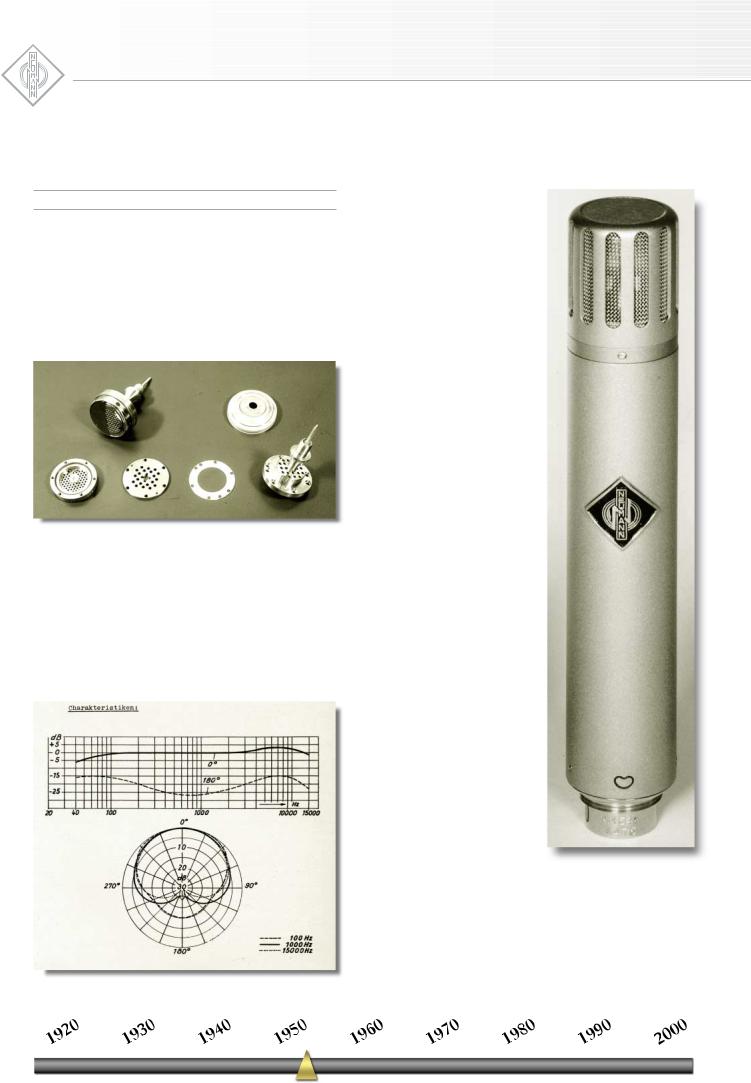Neumann KM 54 User Manual

neumann.berlin
 the microphone company
the microphone company
KM 54 – Miniature Microphone
The KM 53 omnidirectional microphone was the first in Neumann’s family of miniature microphones. A much desired sibling for this family was a microphone with cardioid pickup characteristic. For this it was necessary to develop an entirely new capsule, as the familiar existing cardioid models were far too large for a miniature microphone.
The illustration shows the capsule’s painstaking construction. In the diagram of the complete capsule (above left), one half
of the membrane has been removed to expose the back plate electrode. The diagrams in the bottom row show (from left to right) the back plate electrode with the contact spring inside (rear view), the delay plate, the distance ring and the capsule holder with the rear sound inlets. Above right we see the cover with a fine wire mesh in the middle.
The arrangement of the delay plate between the rear sound inlets and the back plate electrode forms an acoustic labyrinth. Inside the capsule, sound from behind the microphone is delayed just enough to reach the back side of the mem-
brane at the same instant that the sound travelling around the side strikes the front. Ideally, the resulting forces cancel at the membrane and do not produce any output. In this way, a cardioid directional characteristic is achieved.
The membrane of |
the |
KM 54 was made |
from |
pure nickel formed on top of a layer of copper foil, using a galvanization method developed by Neumann. The copper is then dissolved leaving a layer of nickel measuring only 0.7 µ in thickness, which is then attached to one of the rings surrounding the back plate electrode. It would take 1,428 of these membranes layered one on top of the other to reach a thickness of 1 mm. The results of this meticulous capsule construction were exemplary frequency and polar characteristics.
After the introduction of the KM 54 in 1954, it very quickly acquired an excellent reputation as a voice microphone for radio and television. It was used in many chambers of parliament and served at the lectern of the United Nations General Assembly in New York. It was equally successful as a supporting microphone for musical recordings.
The KM 54 was produced from 1954 to 1969. Thousands of highly revered 54s are still in service today.
